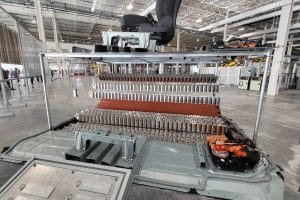- 🚗 UAW is threatening more strikes at Stellantis for breaking a factory re-opening promise.
- 🏭 The promise involved re-launching the Belvidere plant in Illinois, closed since last February.
- 📃 UAW locals are preparing grievances against Stellantis over contract violations.
- 🤝 UAW President emphasizes enforcing contracts to protect American workers.
- 🌍 Major UAW locals in multiple states are involved in filing grievances.
In the latest chapter of labor disputes within the automotive industry, the United Automotive Workers (UAW) union has signaled its readiness to initiate further strikes against Stellantis. This move stems from Stellantis’s failure to adhere to a previously agreed-upon contract that included the re-opening of a factory in Belvidere, Illinois. This potential wave of strikes underscores the intense dynamics at play between labor unions and multinational corporations, particularly in a sector as pivotal as the automobile industry.
The Backstory: A Broken Promise
At the heart of the current tension lies the now-closed Belvidere plant in Illinois. This factory was supposed to be revived as part of an agreement between UAW and Stellantis last year. The contracts, which concluded a successful strike yielding record pay increases at companies including Ford and General Motors, also included the significant commitment from Stellantis to bring the Belvidere plant back online. The closure, which took place last February, has left a significant void, not only in the production capabilities of Stellantis but also in the local economy that depended heavily on the plant’s operations.
UAW’s Strategic Moves
Preparing for Action
- Grievances Filed: UAW locals are gearing up to file formal grievances against Stellantis, citing contract violations relating to Stellantis’s failure to fulfill its commitment. This shows a strategic and lawful approach by the union to hold the automaker accountable.
- Key UAW Locals Involved: Several major UAW locals situated across different states, including Ohio and Michigan, are integral to the union’s strategy. Their involvement magnifies the pressure on Stellantis to adhere to the agreed contracts.
The Stakes for Workers
The UAW’s demands are not just about a building or a location; they are about livelihoods. UAW President Shawn Fain highlights an essential element of this dispute: the pledge made to autoworkers across the industry. By holding Stellantis to its word, the union is advocating not only for its members but also for the broader principle of protecting American jobs and ensuring fair treatment in globalized industries.
Why Strikes?
The decision to call for potential strikes is not made lightly. It serves as both a strategic negotiation tool and a demonstration of solidarity within the union. The stakes are high; a strike can disrupt Stellantis’s production, impacting profits and timelines significantly. Such disruption might be the necessary catalyst Stellantis needs to reconsider its current stance and prioritize the reopening of the Belvidere plant.
What’s Next?
Queries Answered
- Why is UAW considering strikes against Stellantis? The UAW is contemplating strikes because Stellantis has not fulfilled its contractual promise to reopen the Belvidere factory, a key aspect of their agreement settled last year.
- What were the terms of the UAW-Stellantis contract? The contract included a significant clause for the reopening of the Belvidere plant, in addition to record pay raises. This was after successful negotiations last fall, seeking to stabilize and revive employment in affected locales.
- How is Stellantis responding to UAW’s strike threats? While specifics of Stellantis’s response remain under wraps, typical corporate reactions include possible negotiations, public statements, or efforts to reach an amicable solution to avoid the operational disruptions that a strike would entail.
Implications for the Industry
This unfolding scenario between UAW and Stellantis holds key insights for the automotive industry at large. It signals a wider labor movement that demands transparency and fairness, especially when dealing with the workforce that underpins every automotive innovation and production line. As these discussions advance, stakeholders will keenly watch how resolution efforts shape not only the future of the Belvidere plant but also set precedents for labor relations in the automotive domain.





